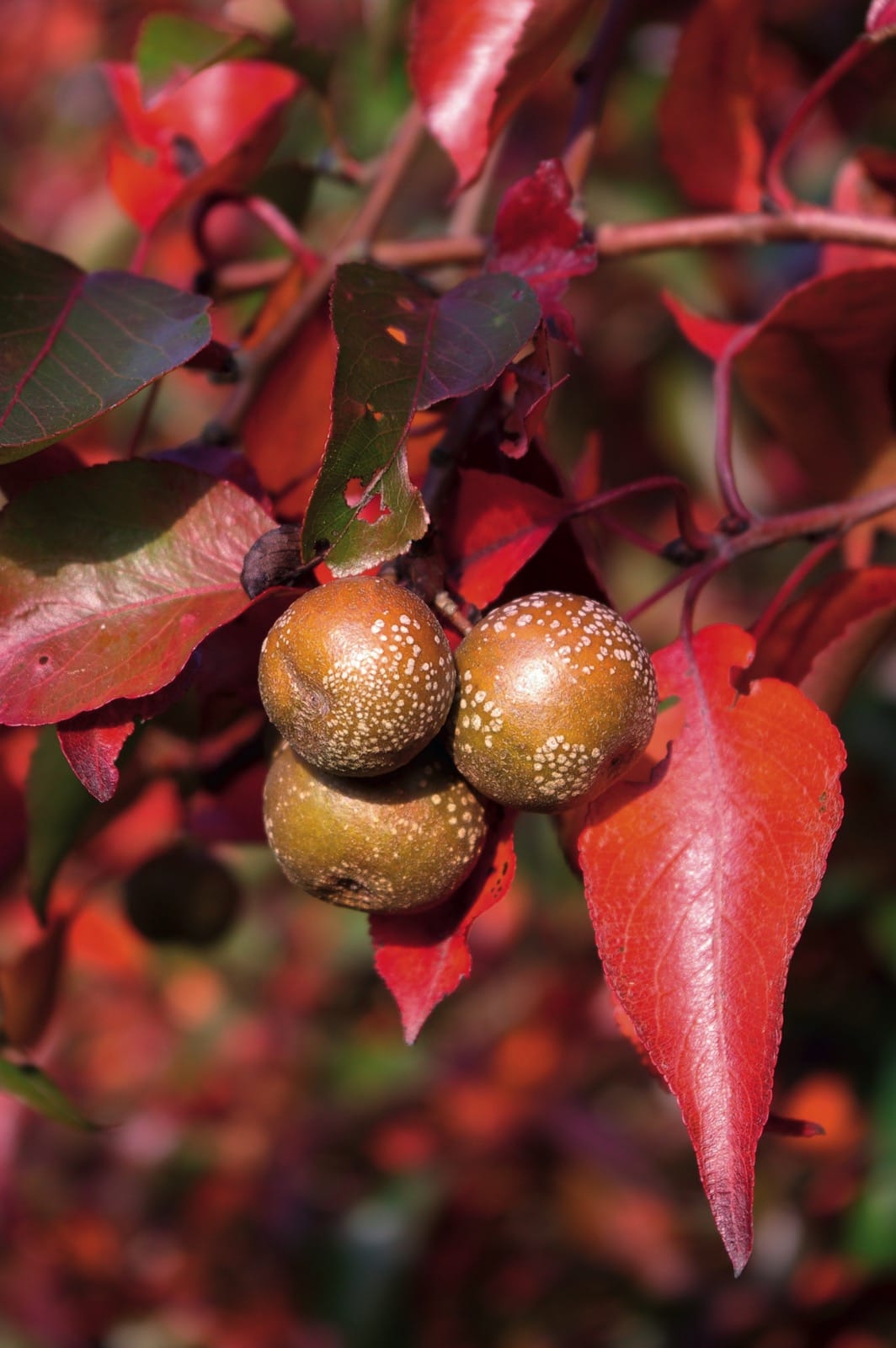Pyrus phaeocarpa
Credits
Article from New Trees by John Grimshaw & Ross Bayton
Recommended citation
'Pyrus phaeocarpa' from the website Trees and Shrubs Online (treesandshrubsonline.
Genus
Tree 5–8 m. Branchlets purplish red and tomentose when young, purplish brown and glabrous when mature. Buds narrowly ovoid, scales tomentose at the margins. Leaves deciduous, 6–10 × 3.5–5 cm, elliptic to narrowly ovate, sparsely tomentose when young, soon glabrous, margins serrate, apex long-acuminate; petiole 2–6 cm long, sparsely pubescent; stipules linear-lanceolate, 0.1–0.2 cm long, caducous. Inflorescence an umbellate raceme with five to eight flowers; pedicels 2–2.5 cm long, largely glabrous. Flowers white, ~3 cm diameter; hypanthium bell-shaped and tomentose, sepals triangular-lanceolate, 0.2–0.3 cm long, petals ovate, 1–1.5 cm long, stamens 20. Pome brown with pale dots, globose or ovoid, 2–2.5 cm diameter. Flowering April, fruiting August to September (China). Lu et al. 2003. Distribution CHINA: Gansu, Hebei, Shaanxi, Shandong, Shanxi, Xinjiang. Habitat Mixed hillside forest of the Loess Plateau, between 100 and 1200 m asl. USDA Hardiness Zone 5. Conservation status Not evaluated. Illustration NTxvi, NT690. Cross-reference K76.
Pyrus phaeocarpa is another obscure pear with great potential as an ornamental autumn foliage tree – also burning brightly on that November 2007 visit to Kew. Its rather elongated glossy dark green leaves turn to shades of orange and orange-red, complementing the yellow ochre-coloured, semi-translucent fruits. The tree at Kew was received from the Long Ashton Research Station in 1986, and although 6 m tall it is much wider than high, suggesting that ample space is needed. Once again it has a very sparse presence in general European and American collections, and there are only two accessions at the National Clonal Germplasm Repository in Corvallis. The oldest of these (PI 46582) was received from South Korea in 1918, having been collected by F.C. Reimer in that year. He noted that it was used as a rootstock in the area around Seoul, as it is in China also (Lu et al. 2003). Pyrus phaeocarpa f. globosa Rehder, with more rounded fruit, is in cultivation (for example, at the Arnold Arboretum), but is not recognised by Flora of China.

